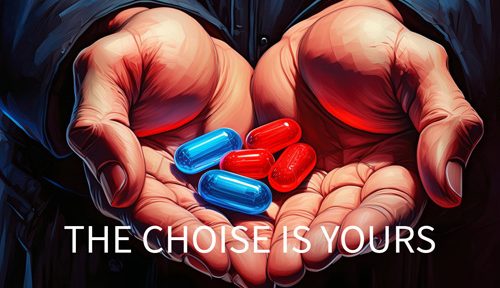Neurographics for Stress Reduction, Goal Setting, and Manifestation
Technique Enhanced: Empowering Self-Improvement with Neurographics
We often overlook the power of our subconscious mind. Enter Neurographics – a revolutionary method that harnesses the synergy between art and psychology to tap into the depths of our psyche. But how exactly can doodling lead to weight loss or reduce stress or landing high-ticket clients? Let’s delve into the fascinating world of Neurographics and uncover its transformative potential.
What is Neurographics
Neurographic art is a simple drawing technique that helps people explore their feelings and thoughts through drawing. It’s like doodling with a purpose!
Neurographic art was developed by Russian psychologist Pavel Piskarev. Drawing inspiration from his background in psychology and art therapy, Piskarev devised the Neurographics method as a way to tap into the subconscious mind and promote self-discovery, healing, and personal growth.
It’s not just about creating art; it’s a powerful tool for unlocking your subconscious mind and achieving your goals.
Here are some additional benefits and achievements you can unlock through Neurographics:
- Stress Reduction: Engaging in Neurographic drawing can serve as a form of mindfulness and stress relief. By focusing on the creative process, individuals can quiet their minds, reduce stress levels, and promote relaxation.
- Enhanced Creativity: Neurographics stimulates the imagination and encourages creative thinking. By exploring the subconscious mind through drawing, individuals can unlock new ideas, perspectives, and solutions to challenges in various aspects of life, including work, art, and personal projects.
- Emotional Healing: Neurographics provides a therapeutic outlet for processing emotions and trauma. Through drawing, individuals can express and release pent-up emotions, gain clarity on past experiences, and embark on a journey of emotional healing and self-discovery.
- Goal Setting and Manifestation: Neurographics can be used as a tool for setting and manifesting goals. By visualizing desired outcomes through drawing, individuals can clarify their intentions, reinforce positive beliefs, and align their subconscious mind with their aspirations, increasing the likelihood of success.
- Self-Discovery and Personal Growth: Neurographics offers a profound pathway to self-discovery and personal growth. By delving into the depths of the subconscious mind, individuals can uncover hidden talents, passions, and desires, leading to greater self-awareness, fulfillment, and purpose in life.
- Improved Relationships: Neurographics can enhance interpersonal relationships by fostering empathy, communication, and understanding. Through collaborative drawing exercises, individuals can deepen connections with others, resolve conflicts, and cultivate harmonious relationships in both personal and professional settings.
- Overcoming Creative Blocks: For artists, writers, and creatives, Neurographics can serve as a powerful tool for overcoming creative blocks and unleashing artistic expression. By tapping into the subconscious mind through drawing, individuals can break free from self-doubt, perfectionism, and fear of failure, allowing their creativity to flow freely.
- Weight Loss: Struggling to shed those stubborn pounds? Neurographics might just be the missing piece of the puzzle. Through drawing, individuals can access their subconscious beliefs and emotions surrounding food, exercise, and body image. By identifying and reframing negative thought patterns, Neurographics empowers individuals to adopt healthier habits, overcome obstacles, and ultimately achieve their weight loss goals.
Drawing Techniques
When we talk about drawing the shape of a neuron in Neurographics, we’re essentially drawing these squiggly tree-like structures with branches and a central body. Neurons are the building blocks of the brain, and they have a unique shape with a central body (called the soma) and branches (called dendrites and axons) extending outwards. By drawing these neuron-like shapes, we’re visually representing the complex connections and networks within our subconscious mind.
But In Neurographics, you have the freedom to draw however you like, allowing your hands to move without any rules or restrictions. For example, you might draw squiggly lines to create shapes resembling trees with branches extending outwards. These branches represent connections between different parts of your thoughts or feelings.
Alternatively, you can draw many circles and connect them together, just like connecting dots in a puzzle. This technique symbolizes the interconnectedness of various aspects of your thoughts or experiences. Each circle might represent a different idea, memory, or emotion, and by connecting them, you’re visually representing how they’re all related to each other.

Here’s my drawing—I’m on a weight loss journey, and I invite you to embark on your own.
As you start drawing, remember to focus on your goal, whatever it may be, and write it down on the paper alongside your drawing. Each drawing represents a step forward on your journey towards personal growth and fulfillment.
And if you’re feeling inspired, I encourage you to share your Neurographic creations with me. Whether you’re just starting out or have been practicing for a while, I’d love to see your drawings and hear about your experiences with Neurographics.
Neurographics is a simple, relaxing practice that requires no prior drawing experience—just an open mind and a willingness to explore. So why not give it a try and see where your creativity takes you?
Thank you for joining me on this exploration of Neurographics. May your drawings bring clarity, inspiration, and transformation to your life.
Happy drawing!




